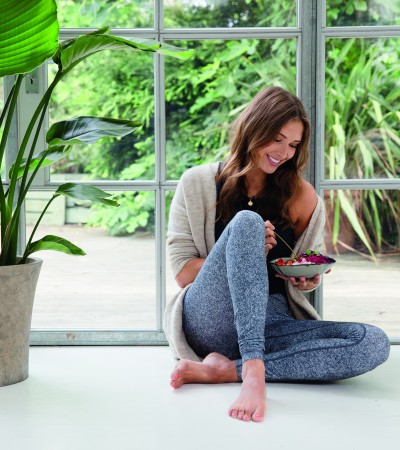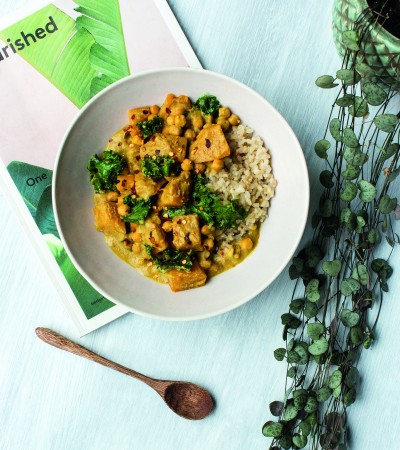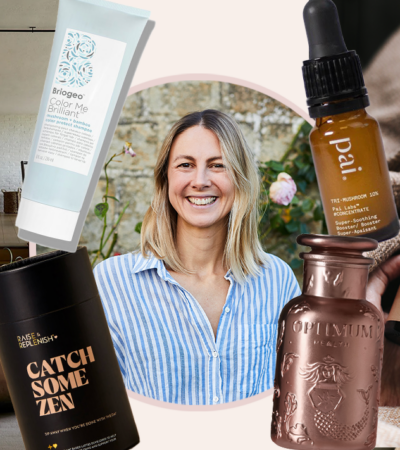Breaking Bad Habits
Lots of us have bad habits when it comes to food. Skipping meals, grazing throughout the day and overeating are just some of the things that can be overcome if you take a more mindful approach to the way you eat. There are many reasons why you may eat mindlessly – for example, when you are distracted during meal times, perhaps trying to multi-task or talk to friends and family, you are not giving your full attention to eating. You therefore may not recognize how much you are eating and when you are full. So many people I talk to say their biggest issue is the 4 p.m. slump, when they experience a sweet craving in order to get them through the rest of the afternoon. Over the years we have created this sugar rollercoaster where our blood sugar levels spike after eating refined sugar (not necessarily sweets – think sandwiches or even salads where the sugar is hidden away in dressings or bread) and then crash just an hour or so later. This crash will inevitably lead to more sugar cravings and then we are back on the roller-coaster again. For many people that is what ‘normal’ feels like and until they break the cycle, they don’t recognize that they could feel so much better. With blood sugar levels peaking and troughing in such an extreme way, it can be impossible to ever feel fully energized. Another habit that you may have developed, and can perhaps consider breaking, is the association of certain activities with eating. For example, watching a film at the cinema or even at home can go hand in hand with filling up on a big bag of sweets or popcorn. Of course, from time to time there is something fun and comforting about curling up with snacks on the sofa, but if it happens too frequently it is a habit that you may choose to address to reduce your intake of processed, sugary foods. Perhaps you always stop in for your favourite treat when you pass a particular shop, or maybe you get to certain times in the day and automatically reach for a snack without thinking whether or not you are actually hungry. While I completely advocate a liberal approach to the way you eat, being more mindful about your diet can really help to break these bad habits.
Flavour
When you first change your diet, one of the things you might struggle with is flavour. You may find that the new foods you are trying taste a little bland. Despite following other people’s tried-and-tested recipes, I was a little disappointed with their lack of flavour. Even if you have always eaten a lot of fresh food, you may be used to including processed foods in your diet, too. These are typically higher in sugar and salt than something you might make at home. If you eat these processed foods regularly, your taste buds become suppressed and therefore less sensitive to subtle flavours. As a result you may feel you need to add more and more salt or sugar to your food in order to enhance its flavour and ‘make it taste better’. Remember that by changing your diet and the ingredients you use, you can retrain your taste buds. In as little as four weeks, you can start appreciating flavour differently – perhaps quite a bland time for a food lover – but in hindsight, it is a small price to pay. In my experience you can adapt your tastes fairly quickly. I now notice an abundance of flavour in the simplest foods, making cooking with, and eating, fresh, healthy food a lot more exciting. I can imagine that for some people the transition could take a little longer or be a little trickier, but I would urge you to stick with it long enough to allow yourself to adapt.
Eating Out
If you’re trying to make healthy changes to your diet, eating out can be a little trickier. For the first few months, post diet-change, I became a bit anti-social and started missing out on quality time with friends and family. I knew this wasn’t sustainable though, so took some steps to make sure that I could maintain my diet-change and still enjoy food with others. When invited to a friend’s house for dinner, for example, I would discuss with them what they were planning to make. If they had planned something that I knew I couldn’t eat, I asked if it would be OK to bring my own food, politely of course, as I didn’t’ want to create extra work for them. When eating in a restaurant, I’d call ahead to find out more about the food they served. Lots of restaurants will happily create something simple for you. I started to realize the importance of having confidence in your decisions. I chose to stick to the way of eating that suits my body all the time, and I did so because that is what makes me feel best. It has absolutely nothing to do with anyone else and so, in the sort of situation where you are ordering in a restaurant and can’t spot something on the menu that works for you, be confident in asking for a little help. Crucially, however, just because you want to make healthy changes doesn’t mean you have to stick with them 100 per cent of the time. If you find that a more casual approach works best for you, then making small changes even some of the time will still make for amazing results. Remember not to over-commit and leave yourself open to feeling disappointed if you don’t follow through every single time. Make it manageable and be kind to yourself. If invited to a friend’s for dinner, ask what they are planning to cook and offer to help or bring food if you think you will struggle. Planning ahead means less of a fuss at the dinner table and your host will hopefully be more understanding..
Simplicity is key
For a lot of us, even if we love to cook, food is so often about convenience. The majority of our meals are likely to be based around whatever is going on during our working week, so finding simple foods that don’t compromise on taste is really helpful. I have a few dishes that I know I can go to again and again, sometimes a few times a week when things are busy, knowing they can be prepared and eaten with minimal hassle, but still taste good and give me the energy that I need. When I began collating recipe ideas for this book, I wanted to show the simplicity of the sort of food you can create with as little fuss as possible. I love to cook and when I’m throwing a dinner party I usually spend a day experimenting with more complicated ideas and trying to get a little more fancy, but that makes up such a tiny proportion of my cooking. Most days, cooking comes down to what’s quickest and easiest, which is why it can be so difficult to break away from the sort of food that isn’t always what is best for you. I wanted to show that healthy food can be convenient as well as tasting good. A key part of this is the ingredients you use. I generally stick with a few core things which I buy every week, which are versatile and fresh, and then add variety where I fancy. Generally I like to keep the list of items I buy regularly fairly short, supplemented by a few cupboard staples that require a one-off shop at a large supermarket or online order. Lots of fresh food is important too, and can be bought in most smaller shops and markets. I know that, being based in London, I have a slightly biased perception of accessibility. I can source almost every ingredient I ever need from my local supermarket, and also have small independent healthfood shops just down the road that stock a few other ingredients I like to use. You will be familiar, I’m sure, with most of the ingredients mentioned in this book, but for a few that are a little more unusual I have included some short introductions. You can buy any of them online or in most healthfood shops, and most of them will last a long time so you don’t have to budget for them regularly. I often buy things in bulk, which helps keep the cost down, too; I also do shop around for the best prices where possible as they can vary hugely.
Extracted from Annie’s new book, Mind Body Bowl which is out tomorrow! Pre-order your copy here!
images: Philippa Langley














